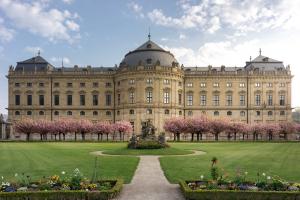
Air pollutants are not only harming human health and the environment but are also degrading surfaces of historical buildings and monuments. Corrosion and soiling of cultural heritage sites as a result of air pollution can lead to severe economic losses as a result of high maintenance and restoration costs. For example, the total annual cost of maintenance work from soiling of the limestone surface of the Colosseum in Rome, a UNESCO World Heritage site, is estimated to be about € 680,000 per year.
A recent study (Report 93 UNESCO Call for data Part IV) developed in the framework of the International Cooperative Programme on Effects of Air Pollution on Materials, including Historic and Cultural Monuments (ICP Materials) under the UNECE Convention on Long-range Transboundary Air Pollution (Air Convention) evaluated the relationship between the environment and the artefact of UNESCO World Heritage Sites (Saint Domnius, Split, Croatia, the Würzburg Residence, Würzburg, Germany, the Royal Palace, Caserta, Italy). The study was presented at the 39th Meeting of the Programme Task Force of ICP Materials that took place (Bochum, Germany and online, 3-5 May 2023).
The study finds that nitrogen oxides (NO2) and particulate matter (PM10) pollution have the most prominent impact on limestone corrosion and soiling, as evidenced by the three selected World Heritage sites. For the Royal Palace of Caserta, the corrosion and soiling is highest. Even though a slight decrease in NO2 and PM10 concentrations is observed in all cities that host these three UNESCO World Heritage sites for the years investigated (2015-2019), risks of corrosion and soiling remain present. This again shows that in addition to pollution from local origins that is measured at urban monitoring stations, pollutants that are generated by sources outside the city or even further away (including from sources hundreds or thousands of kilometres away, including across national borders) has an important negative impact on cultural monuments. For example, high PM10 concentrations in the South of Europe may be a result of shipping emissions or natural sources such as sea spray or Saharan desert dust.
To reduce the impacts and related costs of air pollution on our cultural heritage, further air pollution mitigation actions are needed. The UNECE Air Convention, adopted in 1979, provides a unique and binding regional instrument through which 51 parties in the pan-European and North America cooperate to deliver emission reductions for the major pollutant substances. Further efforts under the Convention can reduce risks to cultural heritage, in addition to human health, ecosystems and the climate.